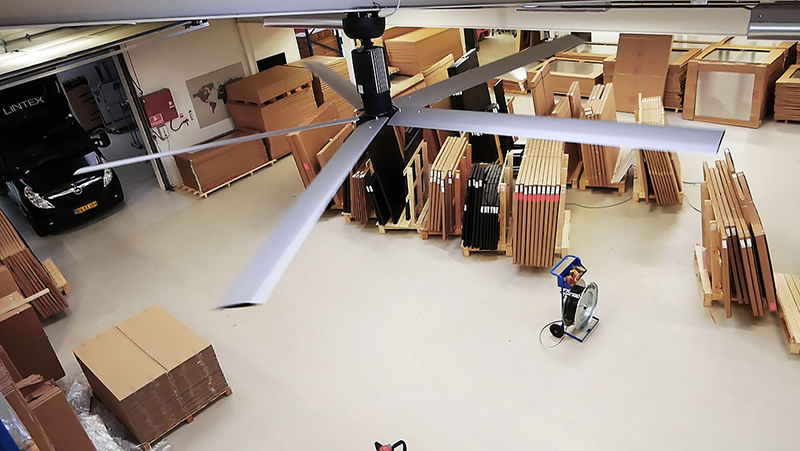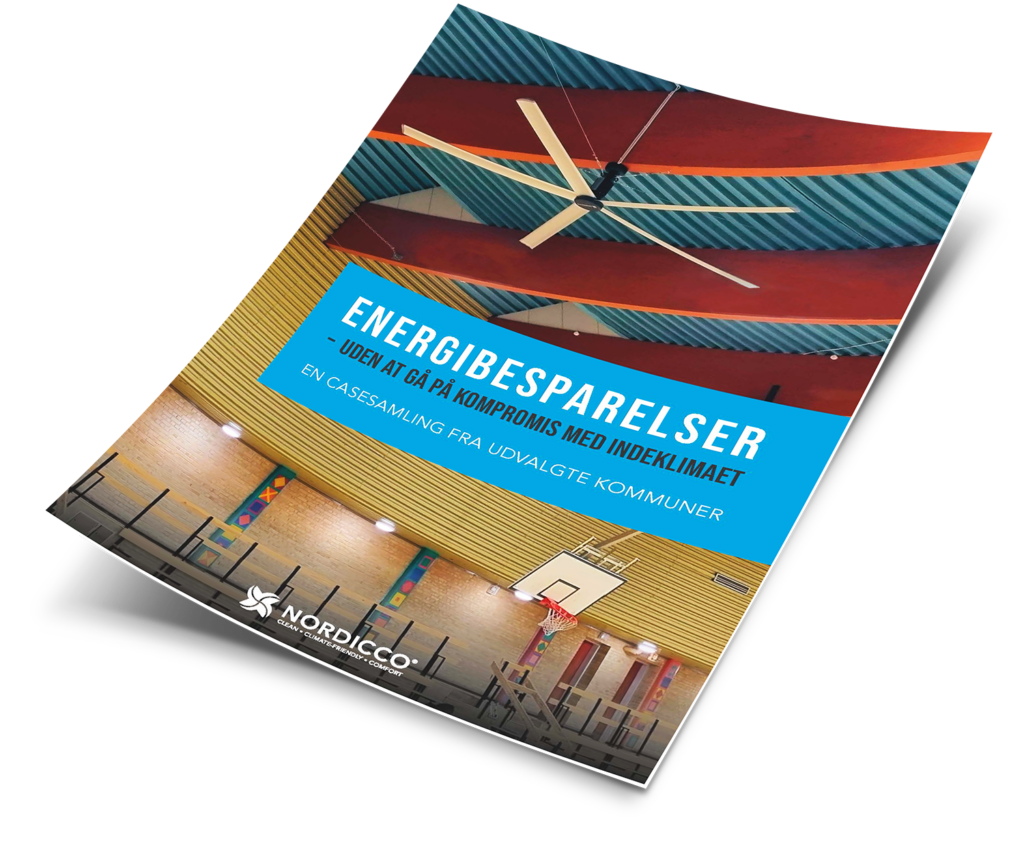
LINTEX A/S was founded in 1983 by Carl Af Ekenstam in Sweden. Lintex collaborates with leading architects and interior designers and is one of the largest players in Northern Europe in the market of glass panels, whiteboards, writing boards, wall panels and screen walls.

Despite their unit heaters (heat blowers) running around the clock, Lintex had challenges in distributing the heat in their warehouse. Especially the winter season was a challenge for employees who were freezing in the warehouse, despite the constant heating (placed at ceiling level). Lintex therefore sought a solution to this heating issue that could improve their indoor climate during winter and create a more comfortable environment for employees. During their search, they were recommended HVLS ceiling fans by their local installation company Trap+.
Trap+ explained to Lintex that an HVLS fan could solve their heating problems. How? By slowly circulating the air and thereby pushing heat down from ceiling level towards ground level in their two warehouse sections. In other words, there was no need to invest in a new and improved heating system. They could simply optimise their existing system by combining it with really large fans. A solution that Partner/Product Director, Henrik Lillelund, almost thought was too good to be true.
Like many other companies, Lintex experienced the classic challenge of distributing their heat in the colder months. The heating of Lintex’ warehouse is accomplished by using unit heaters (heat blowers), mounted near the ceiling. On the other hand, the thermostats that control the heating output – by detecting the temperature in the warehouse- are placed at ground level. And since hot air rises, the thermostats rarely measured high temperatures, since much of the heat was trapped right below the ceiling. Their heat blowers practically ran 24/7 during the cold season, which meant a large energy consumption with great room for improvement. In short, a more efficient heating solution was needed.
Less than an hour after the first fan was installed, the difference could be felt in that particular section of the warehouse. Howso? The heaters simply stopped. The heat had been circulated in the room and pushed down where it benefited the employees and could be detected by the thermostats.
In addition, the fan thereby also solved the problem of annoying background noise from the heaters. One of the employees, Jette Harpsøe, is thrilled that she now has the opportunity to actually hear the radio. She adds: “I don’t even notice the fans running. And I would rather have the fans run non-stop, so that we can hear the music out here, than just having the heaters make noise in the background.”
“Can I get a snowsuit? It is really cold!” Jette said with a smile on her face. She previously thought the winter period was tough to get through because it was so cold in the warehouse. But with their new HVLS ceiling fans, Jette no longer wants a snowsuit.
In general, the installed fans have created a positive atmosphere among the employees, who clearly feel, that they improve the indoor climate. In addition to increased employee satisfaction in the winter, the new fans have contributed to better utilisation of the heat, ensuring energy savings and lower carbon emissions.

“The advantage is that the fans can circulate the air during the summer and make sure that we get all our heat distributed in the room during the winter. It has made the difference that we now have a constant temperature in the room and a nice, warm indoor climate.”
